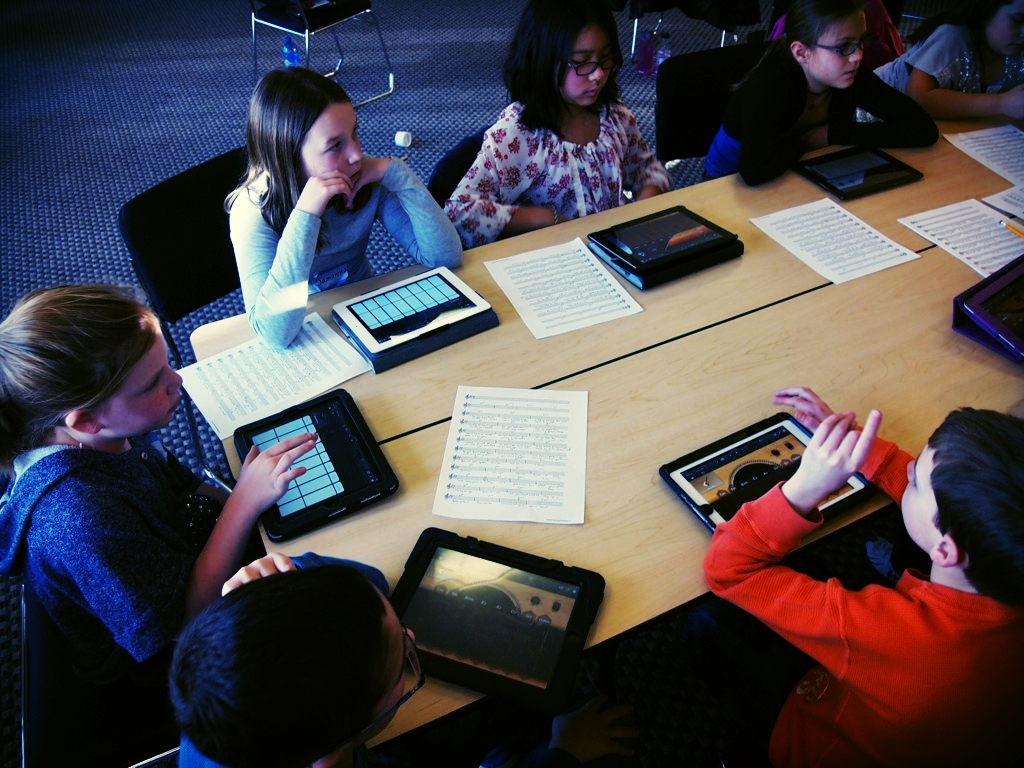Empowered by technology, students are self-directing their own learning, outpacing teachers and schools. More than ever, K-12 students are using mobile devices, games, online learning and digital resources to learn in and outside the classroom.
According to a new report by Project Tomorrow, more than one-third of middle school students say they have already taken an online class in Math, Science and English.
“Students have always self-directed some of their own learning, but with the explosion of mobile devices, 24/7 connectivity and digital resources, students are leaving adults behind as they explore subjects that interest them in the ways they learn best,” said Dr. Julie Evans, CEO of Project Tomorrow.
Each year, the Speak Up Research Project for Digital Learning asks K-12 students, parents and educators about the role of technology for learning in and out of school. In their latest data release, Project Tomorrow details how and when more than 400,000 K-12 students learn.
Some of the findings are obvious, others alarming. For example, more than half (56%) of students say they use technology more often for learning outside of school than in school. Another disconnection between how students learn and how educators think they learn is evident when it comes to using the Internet for homework.
data-animation-override>
“56% of students say they use technology more often for learning outside of school than in school.”
According to the report, the majority of students (79% of high school students, 69% of middle school students) use the Internet at least once a week to support homework. Nearly half (48%) of high school students say they use the Internet daily to support school work. However, just 14% of teachers say they are assigning Internet-dependent homework on a weekly basis.
Another interesting finding is that when it comes to learning, students use mobile devices differently when is directed by a teacher and when is self-directing. According to Project Tomorrow’s data:
When directed by teachers, students use mobile devices to:
- Do Internet research (81%)
- Play educational games (60%)
- Take online tests (50%)
- Read online articles (37%)
- Use online textbooks (32%)
- Watch teacher created video (29%)
When self-directed, students use mobile devices to:
- Check grades (74%)
- Look up class information (54%)
- Email teachers (41%)
- Receive reminders (39%)
- Take notes (39%)
- Take photos of assignments (29%)
Moreover, the report found 10 things schools, educators and parents should know about how K-12 students learn:
- The next step: self-directed mobile learning: K-12 students are using mobile devices to self-direct learning, including doing online research (84 percent), looking up class information (59 percent), creating shareable documents (54 percent), emailing teaching questions (47 percent), setting due date reminders (43 percent), and taking notes (40 percent).
- Changing rules regarding school technology: 42% of students say there are too many rules at school that limits their tech use.
- A new generational divide among students: 37% of students in grades 6-8 say they are playing online or digital games for learning purposes at least weekly; only 1/4 of high school students say the same.
- Learning online is more available: Middle school students say they are very interested in online learning. Their wish lists for online classes include study skills (58%), art appreciation (58%), world languages (56%), career tech ed (51%), and computer science (47%).
- Getting the news, the student way: More often students use a mobile app to get news alerts. Only 41% of students say they know how to detect bias in what they read online or evaluate information accuracy.
- The internet is an all-purpose study guide: 79% of high school students use the internet at least once a week to support homework and school assignments (48 percent use it daily), even though only 29 percent of high school teachers are assigning internet homework weekly.
- Student-teacher conference: Two-thirds of students say teachers should just talk to them in class, and just 28 percent say a text is best.
- Coding for the future: The majority of students are interested in coding, 66% of boys and 58% of girls in grades 3-8 want to learn to code. 13% of elementary students say they are already coding.
- Summer camps give way to online videos: More than one-third of students say they want to learn about future jobs and careers via online courses, digital games, online videos, and social media. Students showed decreasing interest in summer camps.
- Technology and learning is the future: Students say that learning how to use technology is important for their future (51%), and that learning and using technology results in college- and career-ready skills like creativity (46%), collaboration (48%), and problem solving (41%). Students also use technology more often for learning outside of school than in school (56%).
Source: Speak Up Research Project for Digital Learning, 2016 Findings.
This article from Observatory of the Institute for the Future of Education may be shared under the terms of the license CC BY-NC-SA 4.0 
)
)


)